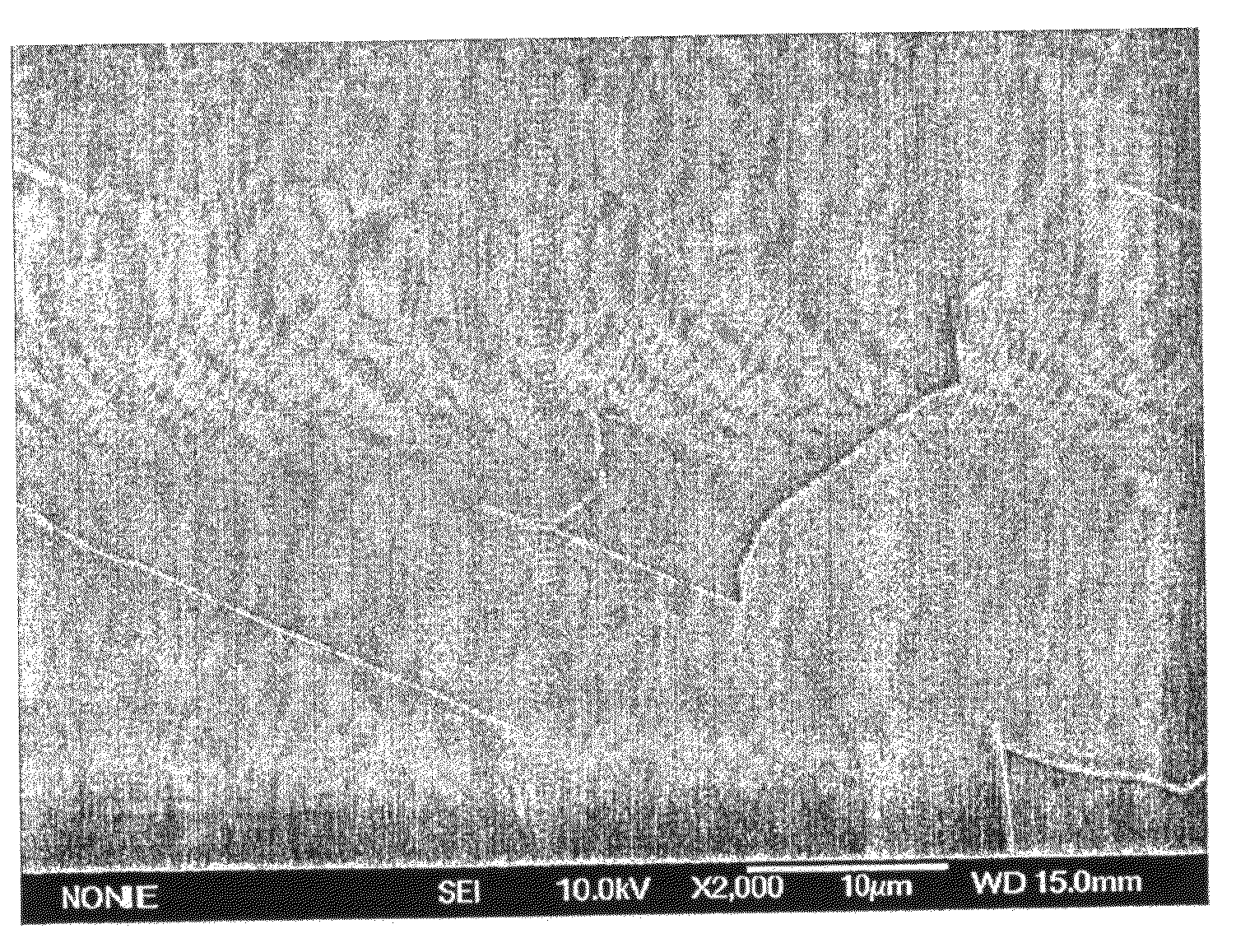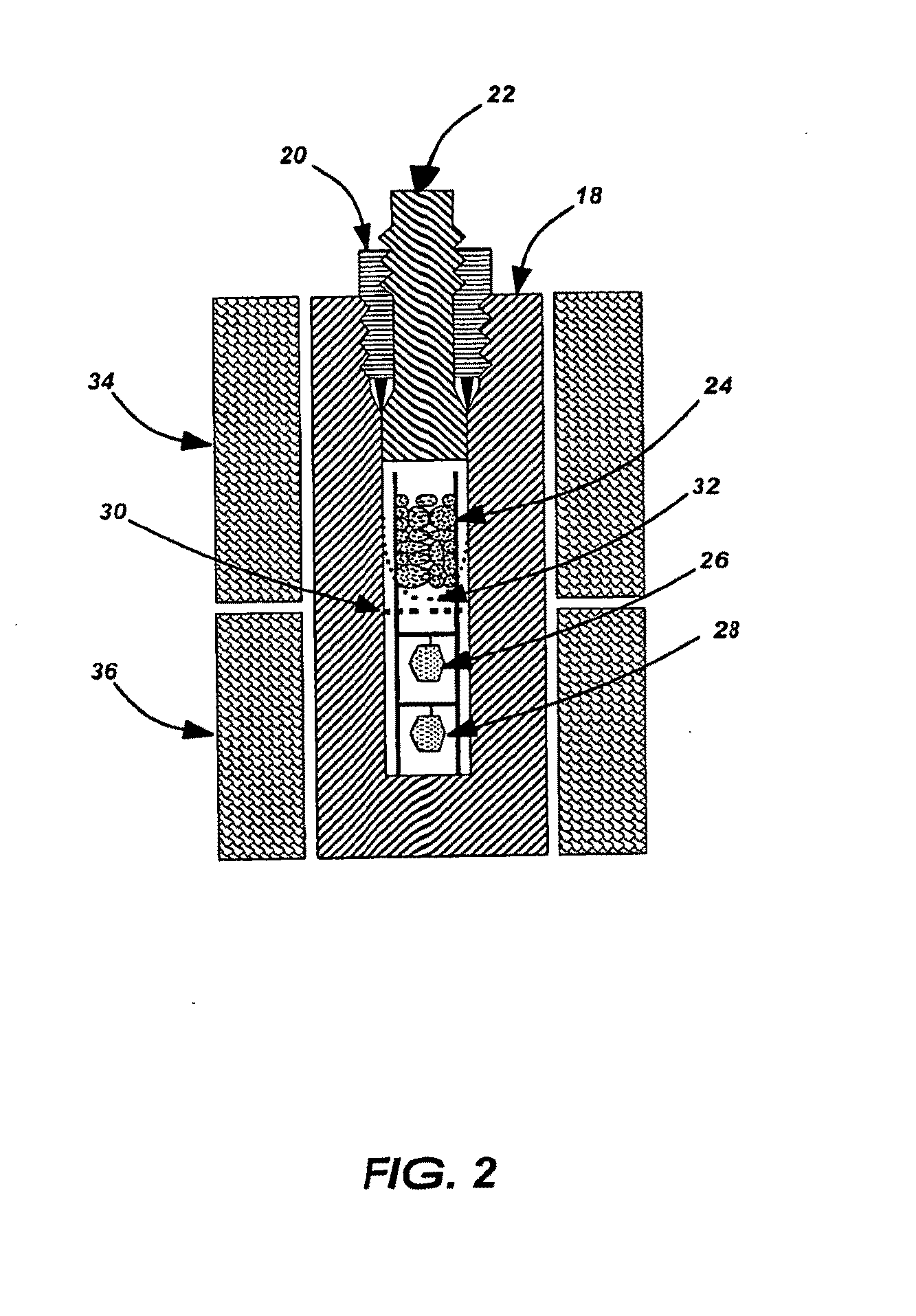Method for Growing Group III-Nitride Crystals in Supercritical Ammonia Using an Autoclave
- Summary
- Abstract
- Description
- Claims
- Application Information
AI Technical Summary
Benefits of technology
Problems solved by technology
Method used
Image
Examples
example 1
[0066]FIG. 6 is a scanning electron microscope (SEM) micrograph of a commercially available GaN powder (99.99%) that was used as a source material. 1 g of the GaN powder was placed in the bottom region of the autoclave and a single seed crystal was hung in the top region. The internal volume was about 500 ml and the amount of ammonia was about 19 g. The opening area of the baffle, which divides the inside of the autoclave into the top region and the bottom region, was about 10%. 0.5 mol % of NaNH2 and 0.5 mol % of NaI were added to the ammonia as mineralizers. The top region was kept at about 540° C. The process duration was 60 hours. FIG. 7 is a SEM micrograph of the seed crystal after the process, wherein source material particles were seen on the seed crystal by SEM observation.
example 2
[0067]FIG. 8 is a SEM micrograph of a polycrystalline GaN for the source material synthesized by a hydride vapor phase epitaxy (HVPE) technique. The obtained chunk of polycrystalline GaN was broken down into smaller pieces. The broken chunks of the polycrystalline GaN were put through a sieve and those with a size of 10 microns or more were selected. 130 g of the polycrystalline GaN was put in a mesh basket of Ni—Cr alloy (Ni content 80%) and placed in the top region of the autoclave. 2 pieces of GaN seed crystals were hung in the autoclave. The internal volume was about 500 ml and the amount of ammonia was about 80 g. The opening area of the baffle, which divides inside of the autoclave into the top region and the bottom region, was about 4.1%. 1 mol % of NaNH2 and 0.05 mol % of NaI were added to ammonia as mineralizers. The top region was kept at about 530° C. and the bottom region was kept at about 550° C. The process duration was 19 days. FIG. 9 is a SEM micrograph of the seed c...
example 3
[0068]In this example, all of the polycrystalline GaN nutrient was recycled from the nutrients and fragments of grown crystals in a previous ammonothermal growth after a water rinse, drying in atmosphere at 120° C. for 1 day, and annealing in a mixture of 2% of hydrogen in nitrogen (total flow rate 1 liter / min) at 1000° C. for 4 hours. 130 g of the polycrystalline GaN was put in a mesh basket of Ni—Cr alloy (Ni content 80%) and placed in the top region of the autoclave. 2 pieces of GaN seed crystals were hung in the autoclave. The internal volume was about 500 ml and the amount of ammonia was about 80 g. The opening area of the baffle, which divides the inside of the autoclave into a top region and bottom region, was about 4.1%. 1 mol % of NaNH2 and 0.05 mol % of Nat were added to ammonia as mineralizers. The top region was kept at about 530° C. and the bottom region was kept at about 550° C. The process duration was 19 days. GaN crystal similar to Example 2 was grown with much less...
PUM
| Property | Measurement | Unit |
|---|---|---|
| Temperature | aaaaa | aaaaa |
| Length | aaaaa | aaaaa |
| Fraction | aaaaa | aaaaa |
Abstract
Description
Claims
Application Information
 Login to View More
Login to View More - R&D
- Intellectual Property
- Life Sciences
- Materials
- Tech Scout
- Unparalleled Data Quality
- Higher Quality Content
- 60% Fewer Hallucinations
Browse by: Latest US Patents, China's latest patents, Technical Efficacy Thesaurus, Application Domain, Technology Topic, Popular Technical Reports.
© 2025 PatSnap. All rights reserved.Legal|Privacy policy|Modern Slavery Act Transparency Statement|Sitemap|About US| Contact US: help@patsnap.com



